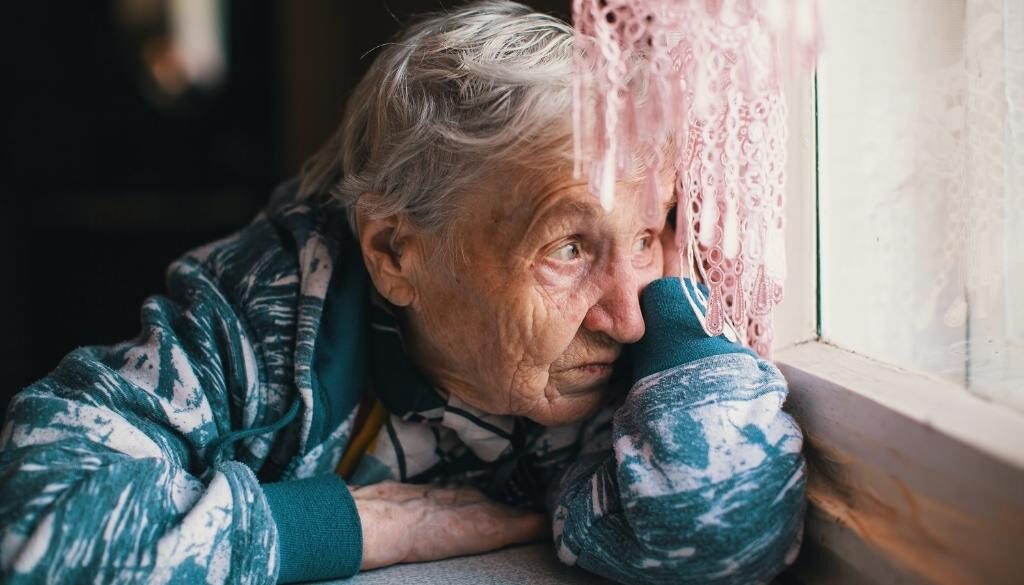Suicide And Older Adults: What You Should Know
Suicide is more than a preventable tragedy—it’s a major public health problem affecting people of all ages. According to the National Institute of Mental Health, it was the 10th leading cause of death in the U.S.
Suicide Concern For Older Adults
Among older adults, in particular, suicide poses significant concern for loved ones:
- While older adults comprise just 12% of the population, they make up approximately 18% of suicides.
- In 2020, among the nearly 46,000 suicides that took place in the U.S., 9,137 were attributed to people age 65 and up.
- Older adults tend to plan suicide more carefully. They are also more likely to use more lethal methods.
- Among people who attempt suicide, one in four seniors will succeed, compared to 1 in 200 youths. Even if a senior fails a suicide attempt, they are less likely to recover from the effects.
- Men 65 and older face the highest overall rate of suicide.
Why Is Suicide Higher In Older Adults?
Suicidal behavior is common in older adults for a number of reasons. Loneliness has been found to top the list. Many seniors are homebound and live on their own. If their spouse has recently died and there are no family members or friends nearby, they may lack the social connections they need to thrive.
Other reasons for suicidal intent in older adults include:
- Grief over lost loved ones: Adults who live long enough may begin to lose cherished family members and friends to old age and illness. They may wrestle with their own mortality and experience anxiety about dying. For some, this “age of loss” is overwhelming and can intensify feelings of loneliness and hopelessness.
- Loss of self-sufficiency: Seniors who were once able to dress themselves, drive, read, and lead an active life may grapple with a loss of identity. They may mourn the independent, vibrant person they once were.
- Chronic illness and pain: Older adults are more likely to face illnesses and chronic diseases such as arthritis, heart problems, high blood pressure, and diabetes. These conditions can bring on pain and mobility issues that compromise quality of life. Seniors may also experience loss of vision and other senses, such as hearing, making it harder to do the things they love.
- Cognitive impairment: In a 2021 study, researchers found that older adults with mild cognitive impairment and dementia had a higher risk for suicide.5< Declines in cognitive function can affect a person’s decision-making abilities and increase impulsivity.
- Financial troubles: Older adults living on a fixed income may struggle to pay their bills or keep food on the table. For someone who is already struggling with health issues or grief, financial stress can be a trigger for suicidal thoughts.
The physical, emotional, and cognitive struggles faced by older adults can lead to feelings of depression, which over time can evolve into clinical depression. Clinical depression is a mood disorder characterized by prolonged feelings of sadness, hopelessness, and loss of interest in activities. While most people with clinical depression do not commit suicide, having major depression does increase the risk.
Warning Signs Of Suicide In Older Adults
An important first step in preventing suicide is knowing the warning signs. In addition to an explicit expression of suicidal intent, there are certain behaviors that can indicate an older adult is thinking about self-harm. These include:
- Loss of interest in activities they used to enjoy.
- Giving away beloved items or changing their will.
- Avoiding social activities.
- Neglecting self-care, medical regimens, and grooming.
- Exhibiting a preoccupation with death.
- Lacking concern for personal safety.
How To Support Someone With Suicidal Thoughts
The National Suicide Prevention Lifeline outlines five action steps you can take if you know an older adult who is thinking about suicide.
- Ask. Don’t be afraid to be direct with the person at risk. Ask questions like, “Are you thinking about suicide?” and “How can I help you?” to initiate a conversation in a supportive and unbiased way. Be sure to listen carefully to their answers and acknowledge their emotional pain. Help the person stay focused on all the reasons why they should want to keep living.
- Be there. If you’re able to, be physically present for the person in order to ease feelings of isolation and provide a sense of connectedness. If a face-to-face visit is not possible, be there for them via phone or video calls. Work with the individual to identify others who may be willing to lend their help. Be sure not to make any promises that you are unable to keep.
- Keep them safe. Find out if the person has already made any attempts on their life. Do they have a specific plan or timing in mind? Do they have access to their planned method of self-harm? Learning the answers to these questions can help you understand whether this individual is in immediate danger. In general, the more detailed a person’s suicide plan is, the higher their risk. Someone who is at imminent risk for suicide may require more intensive intervention. The 988 Suicide & Crisis Lifeline (988) can serve as a valuable resource for helping you determine the next steps.
- Help them connect. If a senior in your life is thinking about suicide, it’s important for them to establish support systems they can rely on now and in future moments of crisis. This includes suicide prevention hotlines such as the Lifeline, as well as resources available in their local community. Find out if the at-risk person is currently seeing a mental health counselor. If not, the Substance Abuse and Mental Health Services Administration (SAMHSA) offers a searchable, confidential directory of mental health providers across the U.S.
- Follow up. Studies have shown that following up can reduce suicide-related deaths in high-risk populations. Once you’ve had an initial conversation with the vulnerable person and helped them establish a support network, make sure to check-in. This can be done with a quick phone call, text message, or even a card. Ask if there is anything else you can do to help them get through this difficult time. The simple act of reaching out and showing you care can truly mean the difference between life and death.
The 988 Suicide Prevention Hotline Can Help
A universal dialing code launched in July 2022 is broadening access to lifesaving suicide prevention and crisis services. Dialing 988 connects people in crisis (or concerned friends, family, and caregivers) directly to the Suicide & Crisis Lifeline, where counselors provide free, unbiased, and confidential support 24 hours a day, 7 days a week.
“If you are willing to turn to someone in your moment of crisis, 988 will be there,” said Xavier Becerra, the secretary of the U.S. Department of Health and Human Services, at a July 2022 press briefing. “988 won’t be a busy signal, and 988 won’t put you on hold. You will get help.”
Older adults who call or send a text message to 988 will speak to a trained counselor from the existing Suicide Prevention Lifeline network. Located in 200 crisis centers all over the country, these counselors are experienced in responding to people in emotional distress, including those with suicidal intent. Dialing 988 is just like dialing 911 for emergency response or 411 for information services. There’s no need to dial any other digits besides those three.
Keep Up To Date On Neighbor News and Blogs
Find all of The Neighbors of Dunn County’s current news here.
Source: NCOA




